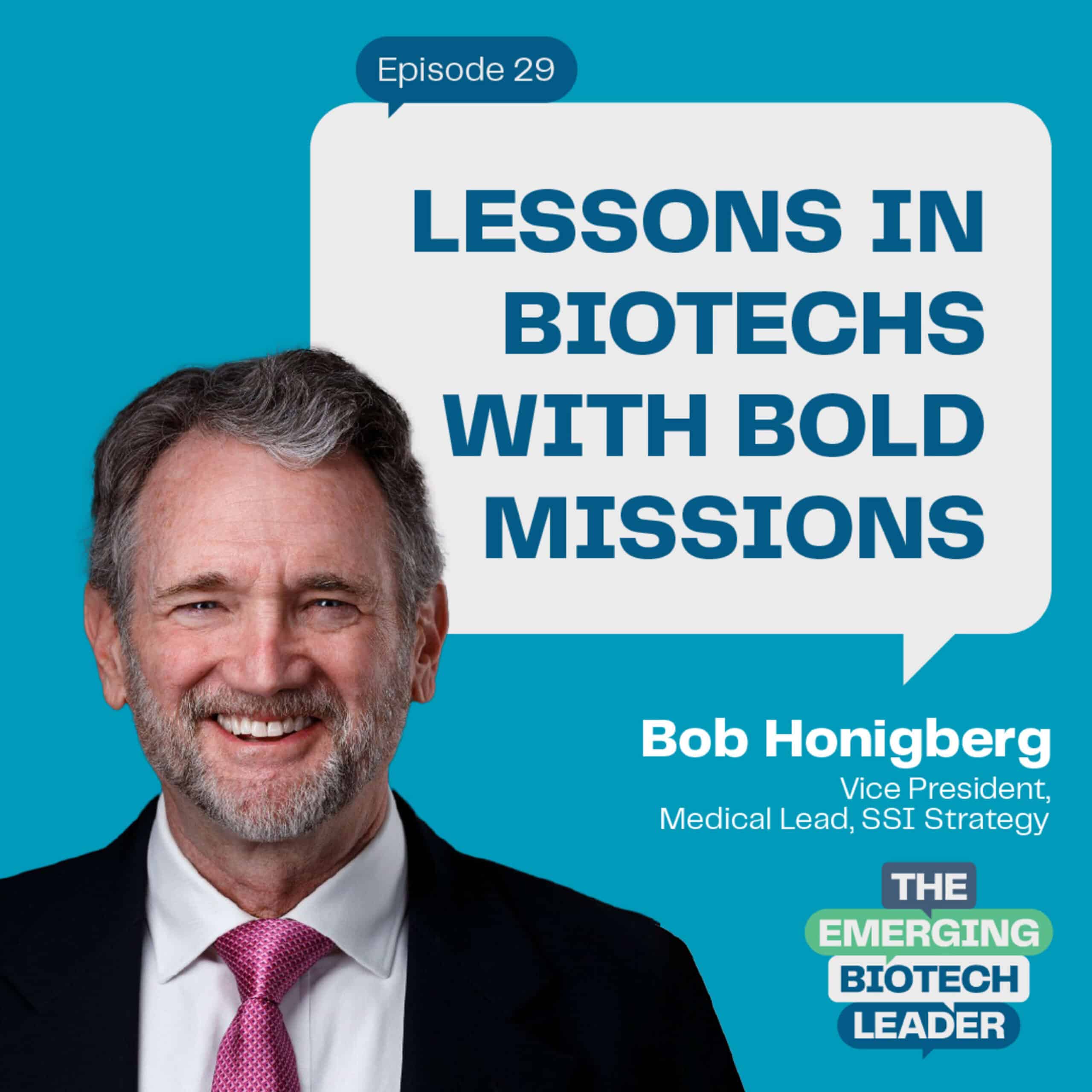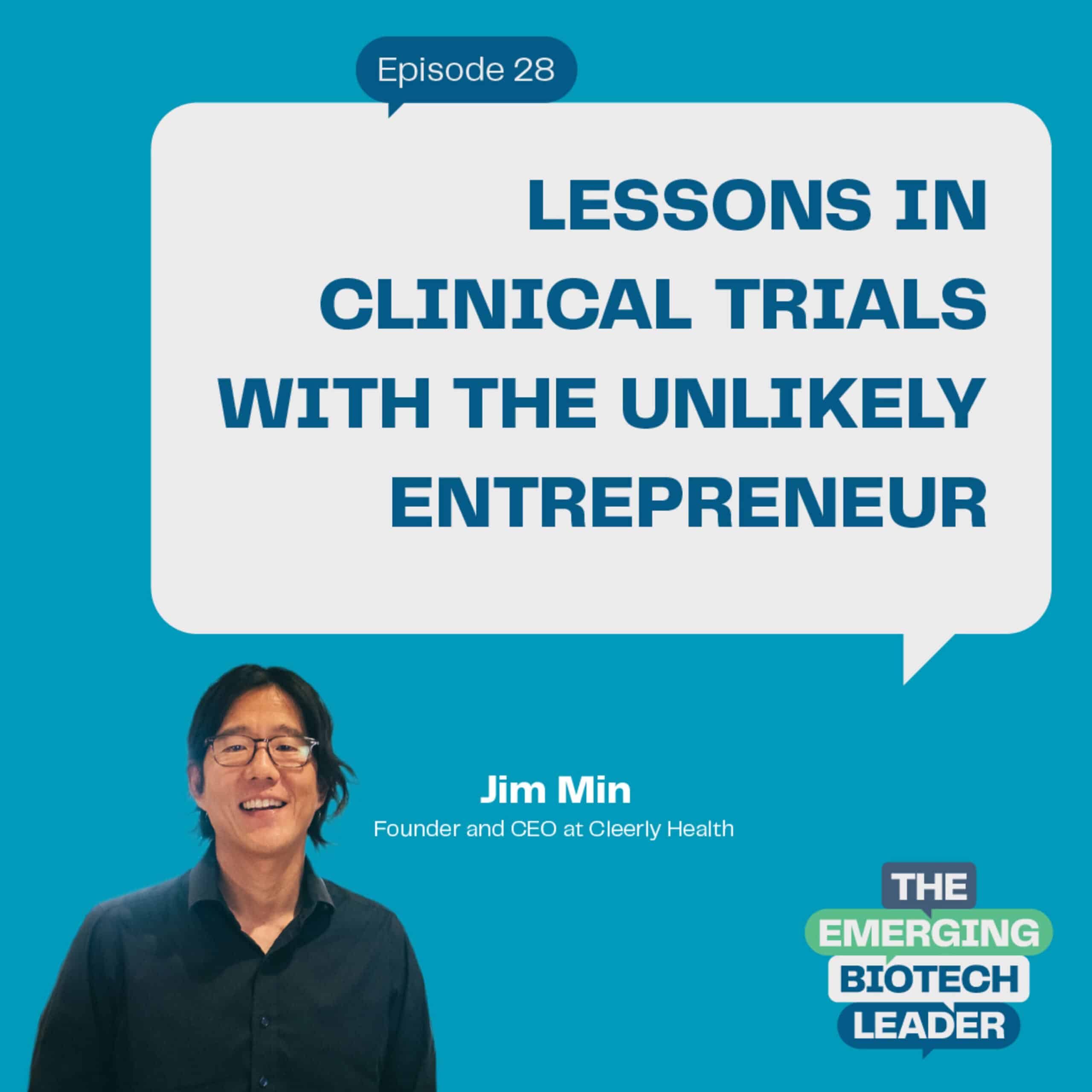
Biomarkers themselves have been a part of medical research for decades. However, digital biomarkers have become increasingly important to the modern clinical development process.
While the term “digital biomarker” is prevalent in discussions around investment, clinical trials, and measuring patient outcomes, a variety of questions surrounding digital biomarkers still exist within the industry.
For example, how are digital biomarkers different from digital measurements? How soon should biotechs start thinking about digital biomarkers? What do the future of digital biomarkers and the patient’s role in this process look like?
In this episode of the Emerging Biotech Leader, we hear from our guest, Chris Benko, CEO at Koneksa Health. Founded in 2014, the mission of Koneska Health is to improve lives by building health measurements that matter. Co-hosts Kim Kushner and Ramin Farhood leverage Chris’s knowledge and experience, dating all the way back to his intern days at Merck, to help listeners uncover a deeper understanding of digital biomarkers overall.
From dividing biomarkers into three big buckets, to patients making clinical research better, to clinically validating digital biomarkers, this episode contains several noteworthy highlights. We share a few below.
Why Are Digital Biomarkers Important?
This is one of the most pressing questions informing the biotech industry to date. From Chris and the team at Koneksa’s point of view, the answer is this: digital health technologies and digital health data have every bit as much potential as molecular and genetic information to transform our understanding of health.
While the term digital biomarker is widely used, its definition is still unclear for many in the sector. To help clarify, a digital biomarker always involves looking for the effect of a disease or the effect of a treatment on a patient.
Digital biomarkers are often confused with digital measurements. Chris helps explain the distinction: “A digital measurement is not typically designed for drug development.” For example, a Garmin device with a wearable ECG provides digital measurement data that was designed for monitoring as well as wide-stream, consumer use. These devices do have their place in the medical world, too, when used accordingly, but at their core, they solely gather digital measurements.
During the interview, Chris also goes on to clarify another common misconception between biomarkers and clinical outcome assessments. Be sure to listen for that overview and guidance on how to use consumer devices for the purposes of gathering digital biomarker data.
The Two Key Components To Understanding Digital Biomarkers
Having been in this space for over a decade now, Chris specifies two key components regarding digital biomarkers:
-(1) Biomarkers are among the most important measurement tools we have for assessing where to place our investments.
-(2) The availability of an effective measurement tool, or the deployment of effective measurement tools, can have a huge bearing on how fast a medicine gets to market or whether or not we even pursue medicine development in a particular area at all.
With this in mind, biotechs can appropriately plan a variety of functions with adequate scope for time and budget.
On the subject of time….
When Should Digital Biomarkers Be Formed?
To help biotech leaders with proactive planning and research, Ramin inquired about the optimal timelines to start thinking about digital biomarkers.
Chris’s answer is crucial to hear: before it’s too late.
“Drug development teams very often realize they have a measurement challenge and that they might really want a biomarker a little too late in the process. The earlier that you can think about digital biomarkers, the better. As early as phase one programs. As early as when you’re doing human safety studies, you should be at least testing and understanding how the measurements work in the population of interest, so that by the time you get to phase two, that’s where you can see some of the greatest value in these tools. When you might be insufficiently powered to fully answer an efficacy question. That’s when you want more biomarker data to help give you confidence as to which way to lean.”
Heed this advice to minimize unnecessary investments of time, personnel, and monetary resources.
On the Parkinson’s+Koneksa Connection
During Chris’s interview, Kim asked him to share more on the use of a mobile phone specific to evaluating digital biomarkers for Parkinson’s disease.
This example provided a relevant example including:
—The previous use of an inefficient paper diary for symptom tracking
—How innovation was born from failure
—The powerful potential for Parkinson’s from a personal connection
–And how the Koneksa team was able to use similar types of assessments on a mobile device, compared to those in the clinic, all by using an app, with no physician or telemedicine required.
To help biotech leaders round out the learnings on all things digital biomarkers, additional topics covered include digital biomarkers and the regulatory perspective (Chris mentions the 21st Century Cures Act of 2016), the best framework for articulating how biomarkers should be qualified, the CRO’s point of view on digital biomarkers and more.
What else could make this in-depth interview on digital biomarkers even more impactful than a compelling analogy? The following was provided by Chris courtesy of Koneksa’s Chief Medical Officer, John Wagner.
“A digital biomarker is like the difference between taking a still photo and filming a movie. And I think that’s a really powerful analogy because when you’re recording people so much more frequently, you’re able to see progression and context and things that you can’t capture in that still photo.”


